Timothy Dozat
Gemini: A Family of Highly Capable Multimodal Models
Dec 19, 2023Abstract:This report introduces a new family of multimodal models, Gemini, that exhibit remarkable capabilities across image, audio, video, and text understanding. The Gemini family consists of Ultra, Pro, and Nano sizes, suitable for applications ranging from complex reasoning tasks to on-device memory-constrained use-cases. Evaluation on a broad range of benchmarks shows that our most-capable Gemini Ultra model advances the state of the art in 30 of 32 of these benchmarks - notably being the first model to achieve human-expert performance on the well-studied exam benchmark MMLU, and improving the state of the art in every one of the 20 multimodal benchmarks we examined. We believe that the new capabilities of Gemini models in cross-modal reasoning and language understanding will enable a wide variety of use cases and we discuss our approach toward deploying them responsibly to users.
FormNetV2: Multimodal Graph Contrastive Learning for Form Document Information Extraction
May 04, 2023
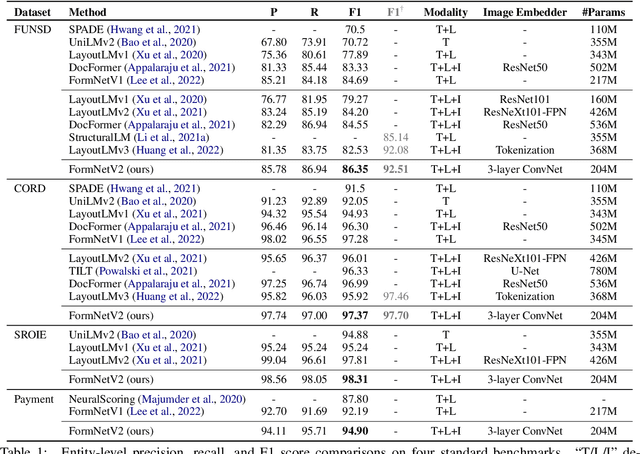
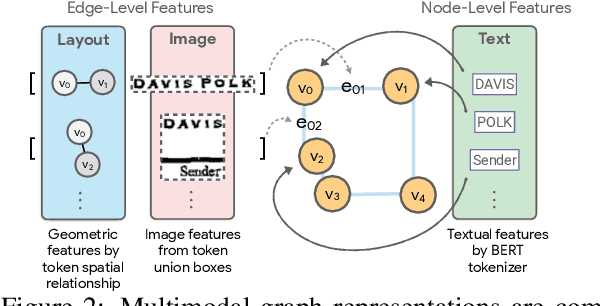

Abstract:The recent advent of self-supervised pre-training techniques has led to a surge in the use of multimodal learning in form document understanding. However, existing approaches that extend the mask language modeling to other modalities require careful multi-task tuning, complex reconstruction target designs, or additional pre-training data. In FormNetV2, we introduce a centralized multimodal graph contrastive learning strategy to unify self-supervised pre-training for all modalities in one loss. The graph contrastive objective maximizes the agreement of multimodal representations, providing a natural interplay for all modalities without special customization. In addition, we extract image features within the bounding box that joins a pair of tokens connected by a graph edge, capturing more targeted visual cues without loading a sophisticated and separately pre-trained image embedder. FormNetV2 establishes new state-of-the-art performance on FUNSD, CORD, SROIE and Payment benchmarks with a more compact model size.
Dialect-robust Evaluation of Generated Text
Nov 02, 2022
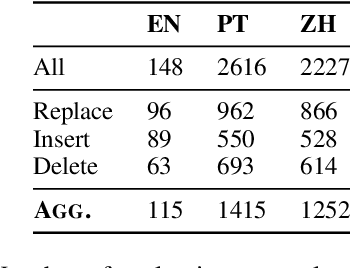


Abstract:Evaluation metrics that are not robust to dialect variation make it impossible to tell how well systems perform for many groups of users, and can even penalize systems for producing text in lower-resource dialects. However, currently, there exists no way to quantify how metrics respond to change in the dialect of a generated utterance. We thus formalize dialect robustness and dialect awareness as goals for NLG evaluation metrics. We introduce a suite of methods and corresponding statistical tests one can use to assess metrics in light of the two goals. Applying the suite to current state-of-the-art metrics, we demonstrate that they are not dialect-robust and that semantic perturbations frequently lead to smaller decreases in a metric than the introduction of dialect features. As a first step to overcome this limitation, we propose a training schema, NANO, which introduces regional and language information to the pretraining process of a metric. We demonstrate that NANO provides a size-efficient way for models to improve the dialect robustness while simultaneously improving their performance on the standard metric benchmark.
FRMT: A Benchmark for Few-Shot Region-Aware Machine Translation
Oct 01, 2022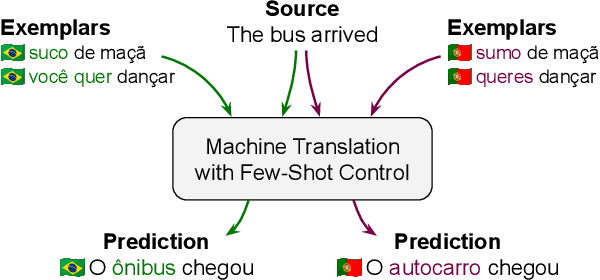
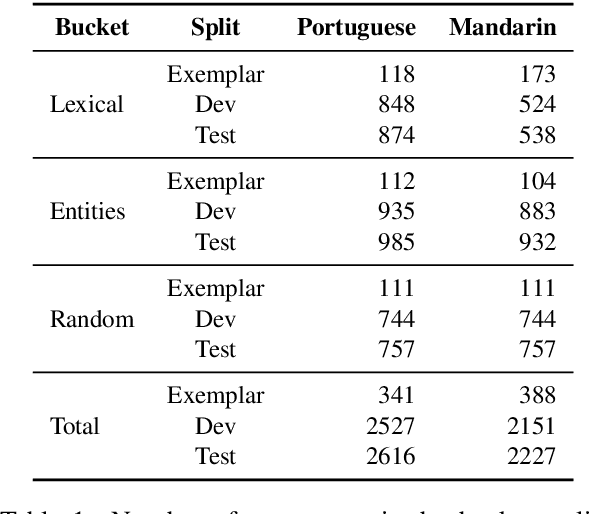
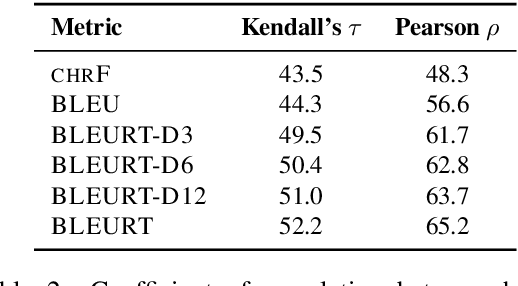
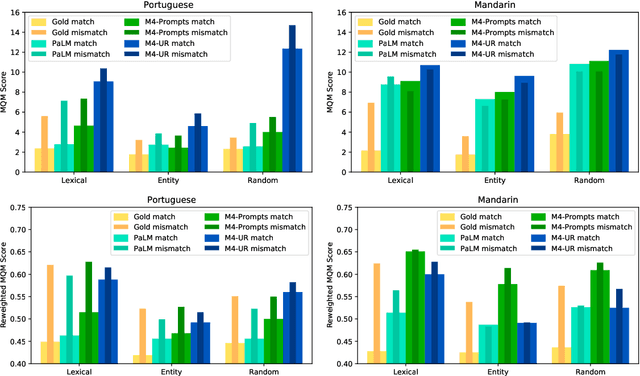
Abstract:We present FRMT, a new dataset and evaluation benchmark for Few-shot Region-aware Machine Translation, a type of style-targeted translation. The dataset consists of professional translations from English into two regional variants each of Portuguese and Mandarin Chinese. Source documents are selected to enable detailed analysis of phenomena of interest, including lexically distinct terms and distractor terms. We explore automatic evaluation metrics for FRMT and validate their correlation with expert human evaluation across both region-matched and mismatched rating scenarios. Finally, we present a number of baseline models for this task, and offer guidelines for how researchers can train, evaluate, and compare their own models. Our dataset and evaluation code are publicly available: https://bit.ly/frmt-task
FormNet: Structural Encoding beyond Sequential Modeling in Form Document Information Extraction
Mar 24, 2022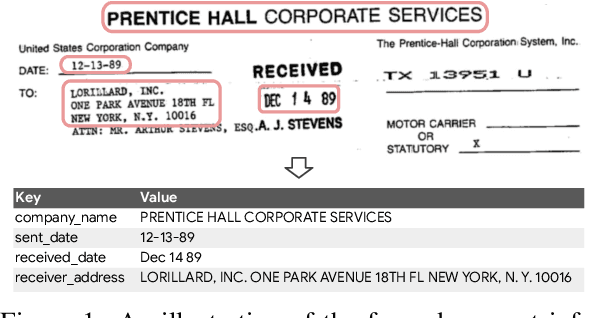
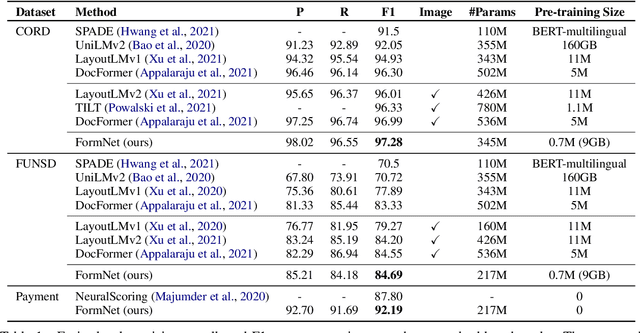

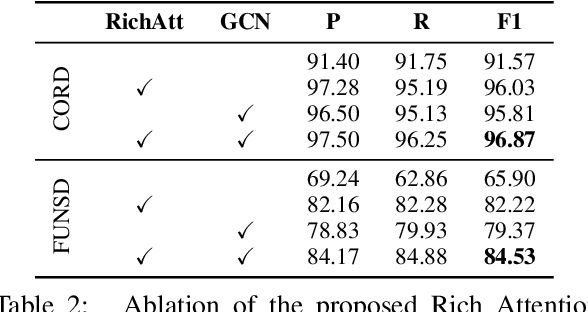
Abstract:Sequence modeling has demonstrated state-of-the-art performance on natural language and document understanding tasks. However, it is challenging to correctly serialize tokens in form-like documents in practice due to their variety of layout patterns. We propose FormNet, a structure-aware sequence model to mitigate the suboptimal serialization of forms. First, we design Rich Attention that leverages the spatial relationship between tokens in a form for more precise attention score calculation. Second, we construct Super-Tokens for each word by embedding representations from their neighboring tokens through graph convolutions. FormNet therefore explicitly recovers local syntactic information that may have been lost during serialization. In experiments, FormNet outperforms existing methods with a more compact model size and less pre-training data, establishing new state-of-the-art performance on CORD, FUNSD and Payment benchmarks.
Universal Dependency Parsing from Scratch
Jan 29, 2019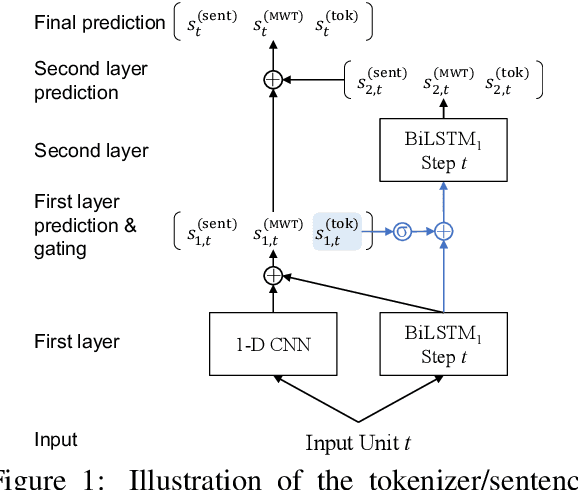
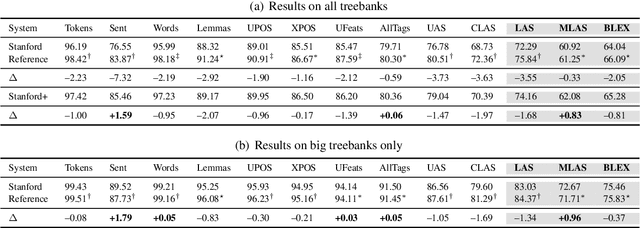
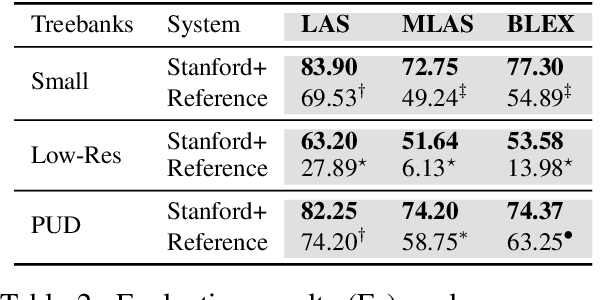
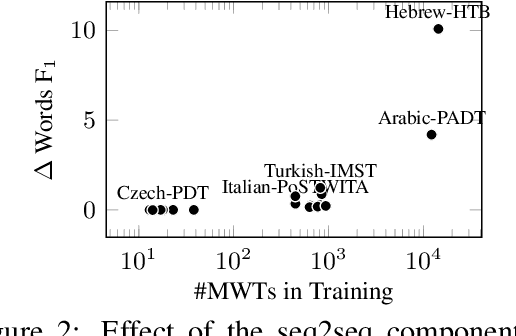
Abstract:This paper describes Stanford's system at the CoNLL 2018 UD Shared Task. We introduce a complete neural pipeline system that takes raw text as input, and performs all tasks required by the shared task, ranging from tokenization and sentence segmentation, to POS tagging and dependency parsing. Our single system submission achieved very competitive performance on big treebanks. Moreover, after fixing an unfortunate bug, our corrected system would have placed the 2nd, 1st, and 3rd on the official evaluation metrics LAS,MLAS, and BLEX, and would have outperformed all submission systems on low-resource treebank categories on all metrics by a large margin. We further show the effectiveness of different model components through extensive ablation studies.
Simpler but More Accurate Semantic Dependency Parsing
Jul 03, 2018
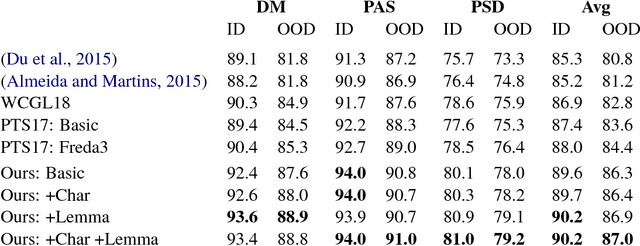
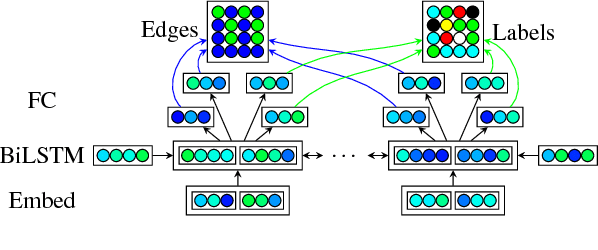
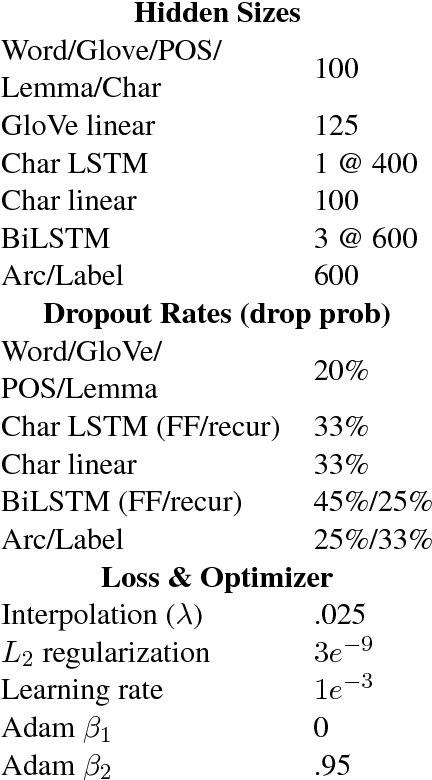
Abstract:While syntactic dependency annotations concentrate on the surface or functional structure of a sentence, semantic dependency annotations aim to capture between-word relationships that are more closely related to the meaning of a sentence, using graph-structured representations. We extend the LSTM-based syntactic parser of Dozat and Manning (2017) to train on and generate these graph structures. The resulting system on its own achieves state-of-the-art performance, beating the previous, substantially more complex state-of-the-art system by 0.6% labeled F1. Adding linguistically richer input representations pushes the margin even higher, allowing us to beat it by 1.9% labeled F1.
Deep Biaffine Attention for Neural Dependency Parsing
Mar 10, 2017

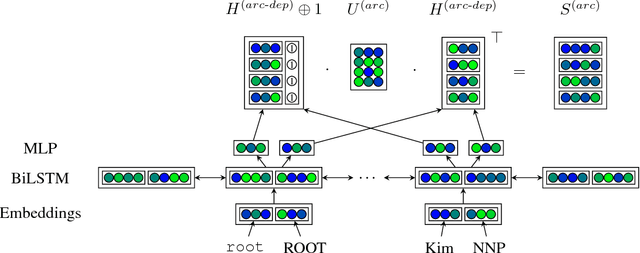
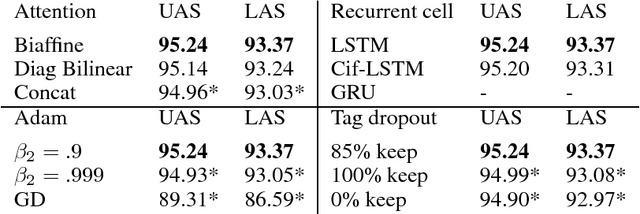
Abstract:This paper builds off recent work from Kiperwasser & Goldberg (2016) using neural attention in a simple graph-based dependency parser. We use a larger but more thoroughly regularized parser than other recent BiLSTM-based approaches, with biaffine classifiers to predict arcs and labels. Our parser gets state of the art or near state of the art performance on standard treebanks for six different languages, achieving 95.7% UAS and 94.1% LAS on the most popular English PTB dataset. This makes it the highest-performing graph-based parser on this benchmark---outperforming Kiperwasser Goldberg (2016) by 1.8% and 2.2%---and comparable to the highest performing transition-based parser (Kuncoro et al., 2016), which achieves 95.8% UAS and 94.6% LAS. We also show which hyperparameter choices had a significant effect on parsing accuracy, allowing us to achieve large gains over other graph-based approaches.
 Add to Chrome
Add to Chrome Add to Firefox
Add to Firefox Add to Edge
Add to Edge